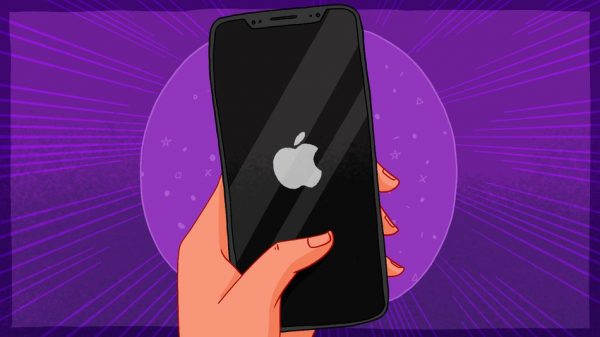Apple’s biggest announcement won’t be the iPhone 8, but HOW you use it

Today’s the big day. The very, very big day. It’s Apple’s massive, thoroughly-leaked iPhone-Apple-Watch-iOS 11-Apple TV-and-whatever-else-it-announces day.
The momentous event is especially symbolic this time because it’s being held at the new Steve Jobs Theater at the still unfinished Apple Park campus. The theater is as much an unveiling as whatever new products Apple’s going to announce.
But while everyone will be fixated on the new iPhone 8 (or iPhone X, if the name dug up from the huge iOS 11 leak is to be believed), Apple will unveil the most important new thing of all. Something you might not realize immediately: HOW you use the iPhone.
In a decade, the iPhone has transformed all modern life across multiple industries. You already feel its rippling effect every single time you pick up your smartphone, even if it’s an Android or BlackBerry or Windows Phone (lulz).
The iPhone’s gone through many hardware evolutions — seven physical designs, to be exact — over the last 10 years.
You’ve no doubt noticed the new hardware improvements and software features if you’re one of the billion-plus people who use Apple’s devices. But one thing’s always remained true: an iPhone is always an iPhone, and no matter how old or new your iPhone is, you still know how to use it.
And that’s mainly because the fundamental way you interact with an iPhone hasn’t changed in the last decade. Apple taught and conditioned us to learn certain behaviors that have become second nature, and now it’s going to throw all those years of muscle memory out the window and make you relearn new ones.
All iPhones up until the new redesigned one Apple will announce later today have revolved around one singular fixture: the home button.
You’re going to have to relearn completely new ways of doing things previously done with the home button.
In 2007, Apple taught us to press the home button and then “swipe to unlock.” Pressing the home button also always brings you back to the home screen.
In 2010, we learned to double-tap to call up the App Switcher. In 2011, Apple added Siri, activated by a long press of the home button, and insisted talking to digital assistants would be the future.
Then, in 2013, Apple added Touch ID to the home button on the iPhone 5S, making it double as a fingerprint sensor to securely unlock the device. The fingerprint reader also enabled Apple Pay authentication.
3D Touch was added on the iPhone 6S as a new way to interact with 2D elements by recognizing how hard you press on something. You could use it to open up additional menus, “peak and pop” elements, and a deep press on the left side of the screen would also bring up the App Switcher.
But the new iPhone X (or 8 or Edition or whatever it’s called) will not have a home button and along with its removal will be the Touch ID sensor. Apple will reportedly replace the fingerprint sensor with “Face ID,” a face scanning technology that’ll be used to unlock your device and authenticate Apple Pay.
Without the iconic home button, how will all of the aforementioned features we’ve been trained to use for a decade work? Multiple reports and leaks suggest Apple will rely on new gestures to replace these the actions that are currently activated by a home button.
A recent Bloomberg report claims the home button will be replaced by a thin bar located at the bottom of the screen. Swiping it up “opens the phone” and then if you keep swiping up it’ll bring up the App Switcher.
iOS developer and prominent iPhone 8 leaker Guilherme recently discovered two videos (no word if they’ll actually make it into iOS 11) showing new gestures for opening Control Center and the same swipe up gesture for launching the App Switcher.
This is also interesting pic.twitter.com/JdYDhZDkev
— Guilherme Rambo (@_inside) August 21, 2017
The new iPhone will get all the spotlight, but it’ll be the new ways you’ll have to learn to use it that have the longest-lasting effect for years of new iPhones to come. These new gestures will be a paradigm shift for for people accustomed to the home button.
For the first few days or weeks, you’ll probably still reach for that physical home button, only to remember it’s no longer there. But time will recalibrate your brain and muscles to adjust to the new controls. It always does.










